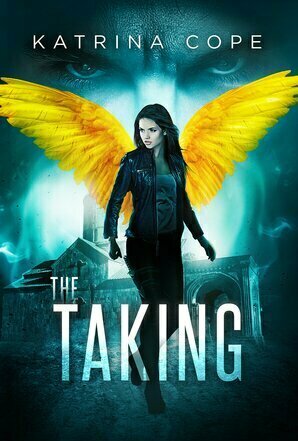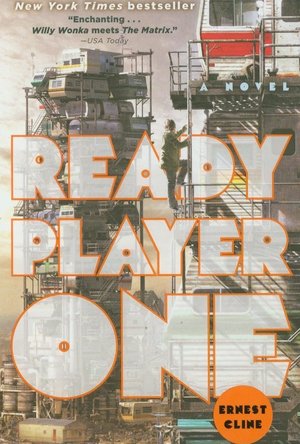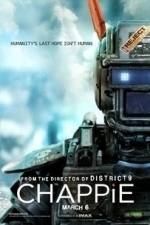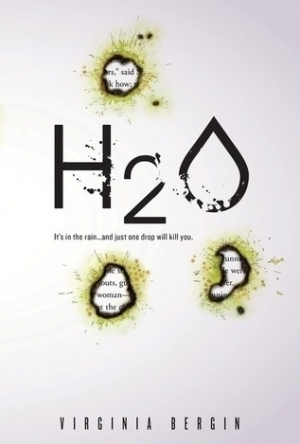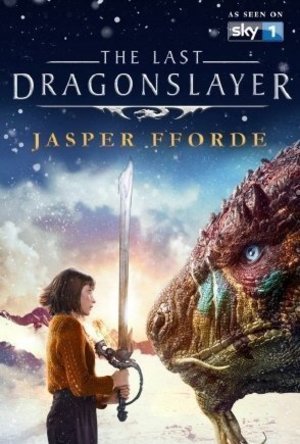Search
Search results
Phil Leader (619 KP) rated The Taking (Afterlife #2) in Books
Nov 26, 2019
After her actions at the end of the first book in the series - Fledgling - the human-turned-angel Aurora has drawn the unwelcome attention of Separus, one of the most powerful of the demons. He covets her power and is determined to capture her and turn her to the side of darkness.
Aware of this Archangel Michael, leader of the angels, assigns her and her friends to be further trained by Zacharias, a rather bad tempered 'earthbound' angel who is an expert in fighting and weapons. As their - at times brutal - training takes place the demons are plotting to capture the three angel friends by using the ultimate bait for Aurora - Ethan. Aurora will need to make a choice, and not an easy one.
The Taking continues more-or-less where Fledgling left off although there is a distinct change of tone. Whereas in the first book Aurora, Cindy and Ben are out and about in the world saving innocents, here they are in training for very much of the time. In other hands this might be a disappointment, but Cope has an eye for telling the interesting bits of stories and not labouring the mundane. It also helps that the training is somewhat unusual, as is the teacher. As the major new character Zacharias is very well drawn, suitably grumpy and terse at being given 'humans' to train, as he sees it.
When conflict with the demons arises Cope again shows the flair for describing fight scenes from the first book and these, as would be expected, are far more intense battles with much more at stake. These are not serene angels gently guiding their human charges through life. These are kick-ass super heroes who are not afraid to put themselves in the way of extreme danger for what they believe is right.
Aurora must also confront her feelings for both Ethan, her human love, and Ben her angel friend. Both relationships are forbidden and this just complicates things further. I suspect that this aspect of the books would appeal more to female young adult readers but they are well written even if you will probably be shouting at the book telling Aurora not to be so silly at points.
Overall a second strong showing in this series and very recommended. If the angel/demon theme doesn't sound like your cup of tea then just give it a go. You will be pleasantly surprised
Aware of this Archangel Michael, leader of the angels, assigns her and her friends to be further trained by Zacharias, a rather bad tempered 'earthbound' angel who is an expert in fighting and weapons. As their - at times brutal - training takes place the demons are plotting to capture the three angel friends by using the ultimate bait for Aurora - Ethan. Aurora will need to make a choice, and not an easy one.
The Taking continues more-or-less where Fledgling left off although there is a distinct change of tone. Whereas in the first book Aurora, Cindy and Ben are out and about in the world saving innocents, here they are in training for very much of the time. In other hands this might be a disappointment, but Cope has an eye for telling the interesting bits of stories and not labouring the mundane. It also helps that the training is somewhat unusual, as is the teacher. As the major new character Zacharias is very well drawn, suitably grumpy and terse at being given 'humans' to train, as he sees it.
When conflict with the demons arises Cope again shows the flair for describing fight scenes from the first book and these, as would be expected, are far more intense battles with much more at stake. These are not serene angels gently guiding their human charges through life. These are kick-ass super heroes who are not afraid to put themselves in the way of extreme danger for what they believe is right.
Aurora must also confront her feelings for both Ethan, her human love, and Ben her angel friend. Both relationships are forbidden and this just complicates things further. I suspect that this aspect of the books would appeal more to female young adult readers but they are well written even if you will probably be shouting at the book telling Aurora not to be so silly at points.
Overall a second strong showing in this series and very recommended. If the angel/demon theme doesn't sound like your cup of tea then just give it a go. You will be pleasantly surprised

Skoobe - Die eBook Flatrate
Book and Entertainment
App
For Booklovers: More than 175.000 eBooks & unlimited reading on phones & tablets Find new books...
Kim Pook (101 KP) rated The Prodigy (2019) in Movies
Sep 25, 2020
Contains spoilers, click to show
A woman is seen running away from something or someone and ends up being almost hit by an elderly driver, we discover the woman has had her hand cut off, how did this happen? Why did it happen?
Forward to the present day and a pregnant woman is going into early labour, in between scenes of her giving birth we see this guy who gets shot down by police, he is holding a severed hand (remember the lady at the beginning?)....
Within months of baby Miles being born, his mother starts to notice strange things such as not crying during his shots and even saying words. It is put down to him being a genius. However, he is not really a genius at all he noticeably quite evil. This is evident when he squashes a bug in his bare hands at 5 years old, harms his babysitter at age 8, and starts speaking a strange language in his sleep.
One day Miles end up receiving psychiatric help after beating a child in his class with a wrench. Nobody can understand what's going on though and it seems Miles is hearing voices in his head and reacting to what they tell him to do. Miles' mother Sarah is eventually informed that Miles has a spirit living inside of him and that spirit is dangerous, Sarah refuses to believe this at first but after a disturbing situation happens at home she begins to believe that it must be true and after a series of events, finally gets him help to try and rid him of the evil inside of him.
I do find it shocking sometimes what they get young children to say in movies, but especially in this one. Considering the type of movie it is though its understandable and the boy who plays Miles does a fantastic job, down to the facial expressions, so you always know when it is Miles and when it's the spirit.
The movie very much reminds me of 'orphan' - another film with an evil adult/child. The ending was quite a bummer though and makes everything that happened in the movie a complete waste of time. It was interesting watching it unfold though and the end does leave it open for a sequel.
Forward to the present day and a pregnant woman is going into early labour, in between scenes of her giving birth we see this guy who gets shot down by police, he is holding a severed hand (remember the lady at the beginning?)....
Within months of baby Miles being born, his mother starts to notice strange things such as not crying during his shots and even saying words. It is put down to him being a genius. However, he is not really a genius at all he noticeably quite evil. This is evident when he squashes a bug in his bare hands at 5 years old, harms his babysitter at age 8, and starts speaking a strange language in his sleep.
One day Miles end up receiving psychiatric help after beating a child in his class with a wrench. Nobody can understand what's going on though and it seems Miles is hearing voices in his head and reacting to what they tell him to do. Miles' mother Sarah is eventually informed that Miles has a spirit living inside of him and that spirit is dangerous, Sarah refuses to believe this at first but after a disturbing situation happens at home she begins to believe that it must be true and after a series of events, finally gets him help to try and rid him of the evil inside of him.
I do find it shocking sometimes what they get young children to say in movies, but especially in this one. Considering the type of movie it is though its understandable and the boy who plays Miles does a fantastic job, down to the facial expressions, so you always know when it is Miles and when it's the spirit.
The movie very much reminds me of 'orphan' - another film with an evil adult/child. The ending was quite a bummer though and makes everything that happened in the movie a complete waste of time. It was interesting watching it unfold though and the end does leave it open for a sequel.
Becs (244 KP) rated Ready Player One in Books
Oct 2, 2019
Genre: Sci-Fi, Fiction, Dystopia, Fantasy
Audience: Young Adult
Reading level: High School +
Interests: science fiction, fantasy, video games, 80’s
Style: Sci-Fi
Point of view: First person.
Difficulty reading: It started off great and I flew through the first half of the book. It’s towards the 55%-75% mark that was a bore for me. But the ending was great!
Promise: Dystopian Sci-Fi video game world
Quality: Minus the 20% that was pretty darn boring and long, the book as a whole was a great read.
Insights: I’m not a huge gaming geek, so without Cline explaining half the time what these gaming terms are, I’d be as lost as a pig in a supermarket. For that, I thank him. It was nice seeing a Dystopian world set in the future that was still in our lifetime. I have never read anything like that – cool to see how Cline wrote it.
Ah-Ha Moment: SPOILERS AHEAD!
Okay, I knew Aech was hiding something. But I could not figure out what it was for the life of me. But when Aech and Parzival first met, in real life, face to face, I WAS NOT EXPECTING him to actually be a ‘her’.
This was me:
Favorite Quotes: “Going outside is highly overrated.” – Yea, I feel ya too. I just want to stay in and read all day every day. Who needs a job, who needs to eat, all we need are books. Am I right?
“You’d be amazed how much research you can get done when you have no life whatsoever.” – I mean, you’re not wrong.
“One person can keep a secret, but not two.” – Secrets, secrets are no fun. Secrets, secrets hurt someone.
Aesthetics: The whole book is an 80’s aesthetic that I love. Plus, it gives a brief inside scoop on the whole “if we don’t care for the planet now, there will be nothing in the future” debate. Which is true, we should care for the planet more than what we do now. I mean we only live on Earth just as much as everybody else. The copy of Ready Player One that I have, is a 2015 Special Edition copy – I love the cover on it.
“People are more than just the way they look.”
Audience: Young Adult
Reading level: High School +
Interests: science fiction, fantasy, video games, 80’s
Style: Sci-Fi
Point of view: First person.
Difficulty reading: It started off great and I flew through the first half of the book. It’s towards the 55%-75% mark that was a bore for me. But the ending was great!
Promise: Dystopian Sci-Fi video game world
Quality: Minus the 20% that was pretty darn boring and long, the book as a whole was a great read.
Insights: I’m not a huge gaming geek, so without Cline explaining half the time what these gaming terms are, I’d be as lost as a pig in a supermarket. For that, I thank him. It was nice seeing a Dystopian world set in the future that was still in our lifetime. I have never read anything like that – cool to see how Cline wrote it.
Ah-Ha Moment: SPOILERS AHEAD!
Okay, I knew Aech was hiding something. But I could not figure out what it was for the life of me. But when Aech and Parzival first met, in real life, face to face, I WAS NOT EXPECTING him to actually be a ‘her’.
This was me:
Favorite Quotes: “Going outside is highly overrated.” – Yea, I feel ya too. I just want to stay in and read all day every day. Who needs a job, who needs to eat, all we need are books. Am I right?
“You’d be amazed how much research you can get done when you have no life whatsoever.” – I mean, you’re not wrong.
“One person can keep a secret, but not two.” – Secrets, secrets are no fun. Secrets, secrets hurt someone.
Aesthetics: The whole book is an 80’s aesthetic that I love. Plus, it gives a brief inside scoop on the whole “if we don’t care for the planet now, there will be nothing in the future” debate. Which is true, we should care for the planet more than what we do now. I mean we only live on Earth just as much as everybody else. The copy of Ready Player One that I have, is a 2015 Special Edition copy – I love the cover on it.
“People are more than just the way they look.”
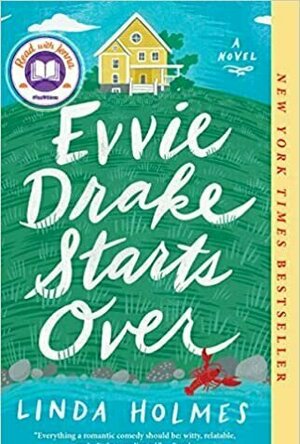
Evvie Drake Starts Over
Book
NEW YORK TIMES BESTSELLER - #ReadWithJenna Book Club Pick as Featured on Today - "Everything a...
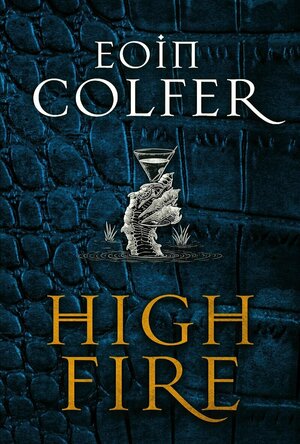
Highfire
Book
From the New York Times bestselling author of the Artemis Fowl series comes a hilarious and...
RavenclawPrincess913 (253 KP) rated Star Splitter in Books
Jul 14, 2023
Star Splitter by Matthew J Kirby was one of my favorite books I have read this year. My favorite character in this book would be Duncan, the ships captains sixteen year old son. I like the character due to him being a great friend with an amazing personality. I also love how him and the main character Jessica formed a friendship and how protective he was over her. My favorite part of the book was when they were together. I really loved the part when he saved her. I also loved all the other parts with them together which made the book interesting. This book was very well written kept me interested, and I loved the plot. I honestly had a hard time putting the book down. The author should write more books like this one.
Even though I loved this book and gave it a five out of five stars, the ending made me mad. I just don't like how it ended. It leaves many questions unanswered. Also, the back and forth between Jessica one and Jessica two got me very confused at times. One scene I disliked was when the two crew members talked about Jessica and her family behind her back. Also, the scene where her father killed the ships doctor was scary to me. Her dad's transfer was corrupted, which made him very violent. Another part I didn't like was the fact that Jessica's mother is the reason the ship was destroyed since she didn't leave Jessica's violent Dad locked up like she was supposed to. In my opinion, Jessica and her mother should have just left the ship alone and left her corrupted father behind. Jessica's relationship with her parents was bad from the start, but I imagine this made it even worse. Duncan also had a bad relationship with his dad, so I'm pretty sure them having that in common helped their relationship grow. In conclusion, I can definitely see myself rereading this book. If you love young adult science fiction with teleportation to another planet, you would love this book too.
Star Splitter was my favorite book read this year, so here's some fun facts about the book. Jessica refers to Carver 1061c as Hades, which I found hilarious and very fitting after everything that happened. Jessica's Mom was a geologist, and her dad a biological studying Hades surface. The rest you will just have to read to find out.
Even though I loved this book and gave it a five out of five stars, the ending made me mad. I just don't like how it ended. It leaves many questions unanswered. Also, the back and forth between Jessica one and Jessica two got me very confused at times. One scene I disliked was when the two crew members talked about Jessica and her family behind her back. Also, the scene where her father killed the ships doctor was scary to me. Her dad's transfer was corrupted, which made him very violent. Another part I didn't like was the fact that Jessica's mother is the reason the ship was destroyed since she didn't leave Jessica's violent Dad locked up like she was supposed to. In my opinion, Jessica and her mother should have just left the ship alone and left her corrupted father behind. Jessica's relationship with her parents was bad from the start, but I imagine this made it even worse. Duncan also had a bad relationship with his dad, so I'm pretty sure them having that in common helped their relationship grow. In conclusion, I can definitely see myself rereading this book. If you love young adult science fiction with teleportation to another planet, you would love this book too.
Star Splitter was my favorite book read this year, so here's some fun facts about the book. Jessica refers to Carver 1061c as Hades, which I found hilarious and very fitting after everything that happened. Jessica's Mom was a geologist, and her dad a biological studying Hades surface. The rest you will just have to read to find out.
Movie Metropolis (309 KP) rated Chappie (2015) in Movies
Jun 11, 2019
A little rough around the edges
District 9 was a tough act to follow for first-time director Neill Blomkamp. His follow up to 2009’s sci-fi sleeper hit was the mediocre Elysium that whilst having a gargantuan budget and the likes of Jodie Foster and Matt Damon, failed on the most basic of levels – storytelling.
Here, Blomkamp returns a little wiser and much richer with Chappie. But does it hark back to the brilliance of District 9?
Chappie follows the story of the titular robot, created by Deon Wilson (Dev Patel), as he grows up in the violent city of Johannesburg. Due to the increasing crime rates, Wilson has created a force of robotic police officers, known as Scouts.
Despite the gritty nature of the film, the cityscapes are stunning with the sweeping shots of the South African metropolis perfectly blended with claustrophobic ruins and towering skyscrapers.
Hugh Jackman stars as ex-soldier Vincent Moore, a man hell bent on proving the capabilities of his own robot, The Moose, even if that means going against the protocols of his employers Tetravaal. Sigourney Weaver also stars as the CEO of the aforementioned corporation.
Unfortunately, side-lining Jackman and to a greater extent Weaver hurts the film. We see Chappie grow from a young child-like robot through to a young adult but Jackman and Weaver only show their faces for very brief moments at a time, though they manage to show their prowess in each scene.
Instead, we are lumbered with real-life pop group Die Antwoord in two roles as Chappie’s ‘mommy’ and ‘daddy’, and despite their decent acting skills and intriguing screen presence, they fail to make as much of an impression as the big names.
Chappie hits home hard and often on just how violent a species we are and the fact that the titular robot doesn’t understand why we can be so cruel only deepens the emotional connection forged for him.
Sharlto Copley, a Blomkamp staple, must be given high praise for crafting such a brilliant cast-member in the motion-captured Chappie. The robot rivals Caesar from Dawn of the Planet of the Apes for sheer realism, and credit must be given to the entire crew for making us feel for a character that has very few human characteristics.
Nevertheless, there is a real issue with the film’s narrative. There are moments of comedic brilliance that are hastily juxtaposed with ones of
sadness and gore, and despite Blomkamp’s best efforts to merge them together, it fails and this becomes increasingly evident in the film’s admittedly exciting finale.
Pacing, a blight that plagued Elysium, is again a problem here. The first 40 minutes of the film drag to such an extent that it feels much longer than its 2 hour running time. This is a huge shame as once it gets going, Chappie rarely lets up until the end credits roll.
Overall, despite not reaching the dizzying heights of the brilliant District 9, director Neill Blomkamp is back on the right track and has crafted a beautifully shot, richly detailed and hugely emotional film – despite his insistence on pushing the most intriguing human characters into the background.
Like the titular character himself, Chappie is charming, if a little rough around the edges and has a lack of story definition, but if you’re a fan of Blomkamp’s work, there’s no reason why you’d be disappointed with what’s on offer.
https://moviemetropolis.net/2015/03/08/a-little-rough-around-the-edges-chappie-review/
Here, Blomkamp returns a little wiser and much richer with Chappie. But does it hark back to the brilliance of District 9?
Chappie follows the story of the titular robot, created by Deon Wilson (Dev Patel), as he grows up in the violent city of Johannesburg. Due to the increasing crime rates, Wilson has created a force of robotic police officers, known as Scouts.
Despite the gritty nature of the film, the cityscapes are stunning with the sweeping shots of the South African metropolis perfectly blended with claustrophobic ruins and towering skyscrapers.
Hugh Jackman stars as ex-soldier Vincent Moore, a man hell bent on proving the capabilities of his own robot, The Moose, even if that means going against the protocols of his employers Tetravaal. Sigourney Weaver also stars as the CEO of the aforementioned corporation.
Unfortunately, side-lining Jackman and to a greater extent Weaver hurts the film. We see Chappie grow from a young child-like robot through to a young adult but Jackman and Weaver only show their faces for very brief moments at a time, though they manage to show their prowess in each scene.
Instead, we are lumbered with real-life pop group Die Antwoord in two roles as Chappie’s ‘mommy’ and ‘daddy’, and despite their decent acting skills and intriguing screen presence, they fail to make as much of an impression as the big names.
Chappie hits home hard and often on just how violent a species we are and the fact that the titular robot doesn’t understand why we can be so cruel only deepens the emotional connection forged for him.
Sharlto Copley, a Blomkamp staple, must be given high praise for crafting such a brilliant cast-member in the motion-captured Chappie. The robot rivals Caesar from Dawn of the Planet of the Apes for sheer realism, and credit must be given to the entire crew for making us feel for a character that has very few human characteristics.
Nevertheless, there is a real issue with the film’s narrative. There are moments of comedic brilliance that are hastily juxtaposed with ones of
sadness and gore, and despite Blomkamp’s best efforts to merge them together, it fails and this becomes increasingly evident in the film’s admittedly exciting finale.
Pacing, a blight that plagued Elysium, is again a problem here. The first 40 minutes of the film drag to such an extent that it feels much longer than its 2 hour running time. This is a huge shame as once it gets going, Chappie rarely lets up until the end credits roll.
Overall, despite not reaching the dizzying heights of the brilliant District 9, director Neill Blomkamp is back on the right track and has crafted a beautifully shot, richly detailed and hugely emotional film – despite his insistence on pushing the most intriguing human characters into the background.
Like the titular character himself, Chappie is charming, if a little rough around the edges and has a lack of story definition, but if you’re a fan of Blomkamp’s work, there’s no reason why you’d be disappointed with what’s on offer.
https://moviemetropolis.net/2015/03/08/a-little-rough-around-the-edges-chappie-review/
Hazel (1853 KP) rated H2O (The Rain, #1) in Books
Dec 7, 2018
<i>Thank you to NetGalley and Pan Macmillan for providing a proof copy to read and review.</i>
The world has already had to deal with worldwide pandemics spread by animals and birds such as swine flu and bird flu. What if there was a fatal disease in the rain? How would humanity cope? This is what Virginia Bergin explores in her debut novel aptly titled <i>The Rain</i>. If anyone were to come into contact with the rain, even a single drop, or contaminated water they would have an immediate reaction and be dead in less than three hours. Fifteen-year-old Ruby Morris, who has so far managed to survive this disaster, narrates the story starting from the first day that the disease arrived in Britain.
Ruby describes the losses of her friends and immediate family, the surprising improvement with her relationship with her stepfather Simon. She explains at length the things she had to face in order to survive, firstly with Simon and then with a particularly nerdy boy from school.
Despite hints from the title (and the blurb, of course) it is a long time before Ruby reveals what has actually happened. She talks to the reader as if they are experiencing the same thing and therefore know what she is referring to. Whilst this was probably an attempt to create suspense and to encourage the reader to keep reading it was slightly galling. What was really wanted was for Ruby to get to the point so that she and her audience would be on the same wavelength.
Whilst some readers may be able to relate to the main character: a teenage girl who loves to spend time with her friends and going to parties but has strict parents (and/or step-parents) who never let her do any of those things, which means she cannot easily have the thing she most desires – a boyfriend; she is actually a rather annoying, snobbish brat. She’s the kind of person that could be described as a “clueless bully”, a selfish girl who mostly, if not only, cares about appearances. Even in the face of the potential end of the world, or at least mankind, she is constantly worrying about the way she looks and what she wears, and is thrilled that she can break into expensive shops and take whatever make-up or clothing she wishes. There was probably a point in this character flaw – the exploration of how not only a young person copes on there own in dire situations, but someone of this particular mindset – however it was exasperating to read. She did change a little over the course of the story but not enough for her to become a likable character.
<i>The Rain</i> is more appropriate for young adult readers due to the nature of the main character, however it does deal with rather disturbing themes such as death and violence. Having said that there is nothing to stop older readers from enjoying the novel. It is an interesting concept, which, although highly unlikely to occur, will make people question how they would behave in the given situation. Would they be one of the first to die, or would they be in supermarkets fighting for the quickly disappearing food and drink? It is a thought-provoking idea!
The world has already had to deal with worldwide pandemics spread by animals and birds such as swine flu and bird flu. What if there was a fatal disease in the rain? How would humanity cope? This is what Virginia Bergin explores in her debut novel aptly titled <i>The Rain</i>. If anyone were to come into contact with the rain, even a single drop, or contaminated water they would have an immediate reaction and be dead in less than three hours. Fifteen-year-old Ruby Morris, who has so far managed to survive this disaster, narrates the story starting from the first day that the disease arrived in Britain.
Ruby describes the losses of her friends and immediate family, the surprising improvement with her relationship with her stepfather Simon. She explains at length the things she had to face in order to survive, firstly with Simon and then with a particularly nerdy boy from school.
Despite hints from the title (and the blurb, of course) it is a long time before Ruby reveals what has actually happened. She talks to the reader as if they are experiencing the same thing and therefore know what she is referring to. Whilst this was probably an attempt to create suspense and to encourage the reader to keep reading it was slightly galling. What was really wanted was for Ruby to get to the point so that she and her audience would be on the same wavelength.
Whilst some readers may be able to relate to the main character: a teenage girl who loves to spend time with her friends and going to parties but has strict parents (and/or step-parents) who never let her do any of those things, which means she cannot easily have the thing she most desires – a boyfriend; she is actually a rather annoying, snobbish brat. She’s the kind of person that could be described as a “clueless bully”, a selfish girl who mostly, if not only, cares about appearances. Even in the face of the potential end of the world, or at least mankind, she is constantly worrying about the way she looks and what she wears, and is thrilled that she can break into expensive shops and take whatever make-up or clothing she wishes. There was probably a point in this character flaw – the exploration of how not only a young person copes on there own in dire situations, but someone of this particular mindset – however it was exasperating to read. She did change a little over the course of the story but not enough for her to become a likable character.
<i>The Rain</i> is more appropriate for young adult readers due to the nature of the main character, however it does deal with rather disturbing themes such as death and violence. Having said that there is nothing to stop older readers from enjoying the novel. It is an interesting concept, which, although highly unlikely to occur, will make people question how they would behave in the given situation. Would they be one of the first to die, or would they be in supermarkets fighting for the quickly disappearing food and drink? It is a thought-provoking idea!
Hazel (1853 KP) rated The Last Dragonslayer (The Last Dragonslayer, #1) in Books
Dec 17, 2018
<i>I received this book for free through Goodreads First Reads.</i>
The recent dramatisation on Sky1 over the Christmas period (which I have not watched) has prompted the release of a new edition of Jasper Fforde’s <i>The Last Dragonslayer</i>, which originally appeared in bookstores six years ago. Fforde is perhaps best known for his <i>Thursday Next</i> series, a comical science-fiction story, but he proves he can equally tackle fantasy with this tale about an intrepid, young dragonslayer.
In the slightly fictional Kingdom of Hereford, part of the Ununited Kingdom, is a home and employment agency for mystical artisans. Over the past decades, magic has begun to diminish, leaving soothsayers and sorcerers struggling to find jobs. Jennifer Strange, although only fifteen, is temporarily in charge of running the agency, Kazam, and looking after the building’s cantankerous inhabitants. Although competent with her position, Jennifer soon finds herself out of her depth when wizards begin having prescient visions of the death of the last living dragon.
Able to ignore the prophecy at first, Jennifer becomes deeply involved once it is revealed that she is the foretold dragonslayer. Being both helped and hindered by friends and obdurate sorcerers, Jennifer desperately tries to prevent the shocking prediction from coming true. However, as she quickly discovers, it is impossible to outrun your own fate, especially if Big Magic is involved.
<i>The Last Dragonslayer</i> is a fun book to read that, despite the slow build up to the promised dragon story, is humorous and engaging throughout. Jasper Fforde is a particularly witty writer who uses genuine, intelligent, and often subtle, puns rather than demeaning himself by resorting to crude jokes. Although some may dismiss dragons, magic and fantasy as fatuous nonsense, it is clear Fforde is writing for the more intellectual reader.
The way in which the story is executed, particularly the conclusion, borders on genius and deserves to be highly praised. Magic is a concept that has been written about thousands of times, and also mocked in parodies of well-known literature. <i>The Last Dragonslayer</i> successfully combines fantasy and humour in a way that avoids ridicule.
Some may argue that <i>The Last Dragonslayer</i> is a young adult novel due to the age of the protagonist and the less highfaluting content in comparison to Fforde’s other works. On the other hand, Jennifer Strange is a character that appears a lot older than she actually is, and is involved in events and satire that a younger audience may not be able to fully appreciate. Therefore, there is nothing to prevent readers of all ages from enjoying this book, and the rest of the series, of course.
I particularly enjoyed reading Jasper Fforde’s <i>The Last Dragonslayer</i>. I found it engaging and amusing, loved the characters, and was slightly disheartened when the book ended earlier than I expected – that is the downside of having sneak peak chapters at the rear of the paperback! Of all the Jasper Fforde books I have read (<i>The Eyre Affair</i>, 2001 and <i>Shades of Grey</i>, 2009) <i>The Last Dragonslayer</i> has been my favourite. Perhaps the potential younger target audience prevented me from getting lost, unlike in the complexity of the other stories. As long as you can forgive the author for his fish fetish and preoccupation with marzipan, you will absolutely love this book.
The recent dramatisation on Sky1 over the Christmas period (which I have not watched) has prompted the release of a new edition of Jasper Fforde’s <i>The Last Dragonslayer</i>, which originally appeared in bookstores six years ago. Fforde is perhaps best known for his <i>Thursday Next</i> series, a comical science-fiction story, but he proves he can equally tackle fantasy with this tale about an intrepid, young dragonslayer.
In the slightly fictional Kingdom of Hereford, part of the Ununited Kingdom, is a home and employment agency for mystical artisans. Over the past decades, magic has begun to diminish, leaving soothsayers and sorcerers struggling to find jobs. Jennifer Strange, although only fifteen, is temporarily in charge of running the agency, Kazam, and looking after the building’s cantankerous inhabitants. Although competent with her position, Jennifer soon finds herself out of her depth when wizards begin having prescient visions of the death of the last living dragon.
Able to ignore the prophecy at first, Jennifer becomes deeply involved once it is revealed that she is the foretold dragonslayer. Being both helped and hindered by friends and obdurate sorcerers, Jennifer desperately tries to prevent the shocking prediction from coming true. However, as she quickly discovers, it is impossible to outrun your own fate, especially if Big Magic is involved.
<i>The Last Dragonslayer</i> is a fun book to read that, despite the slow build up to the promised dragon story, is humorous and engaging throughout. Jasper Fforde is a particularly witty writer who uses genuine, intelligent, and often subtle, puns rather than demeaning himself by resorting to crude jokes. Although some may dismiss dragons, magic and fantasy as fatuous nonsense, it is clear Fforde is writing for the more intellectual reader.
The way in which the story is executed, particularly the conclusion, borders on genius and deserves to be highly praised. Magic is a concept that has been written about thousands of times, and also mocked in parodies of well-known literature. <i>The Last Dragonslayer</i> successfully combines fantasy and humour in a way that avoids ridicule.
Some may argue that <i>The Last Dragonslayer</i> is a young adult novel due to the age of the protagonist and the less highfaluting content in comparison to Fforde’s other works. On the other hand, Jennifer Strange is a character that appears a lot older than she actually is, and is involved in events and satire that a younger audience may not be able to fully appreciate. Therefore, there is nothing to prevent readers of all ages from enjoying this book, and the rest of the series, of course.
I particularly enjoyed reading Jasper Fforde’s <i>The Last Dragonslayer</i>. I found it engaging and amusing, loved the characters, and was slightly disheartened when the book ended earlier than I expected – that is the downside of having sneak peak chapters at the rear of the paperback! Of all the Jasper Fforde books I have read (<i>The Eyre Affair</i>, 2001 and <i>Shades of Grey</i>, 2009) <i>The Last Dragonslayer</i> has been my favourite. Perhaps the potential younger target audience prevented me from getting lost, unlike in the complexity of the other stories. As long as you can forgive the author for his fish fetish and preoccupation with marzipan, you will absolutely love this book.
